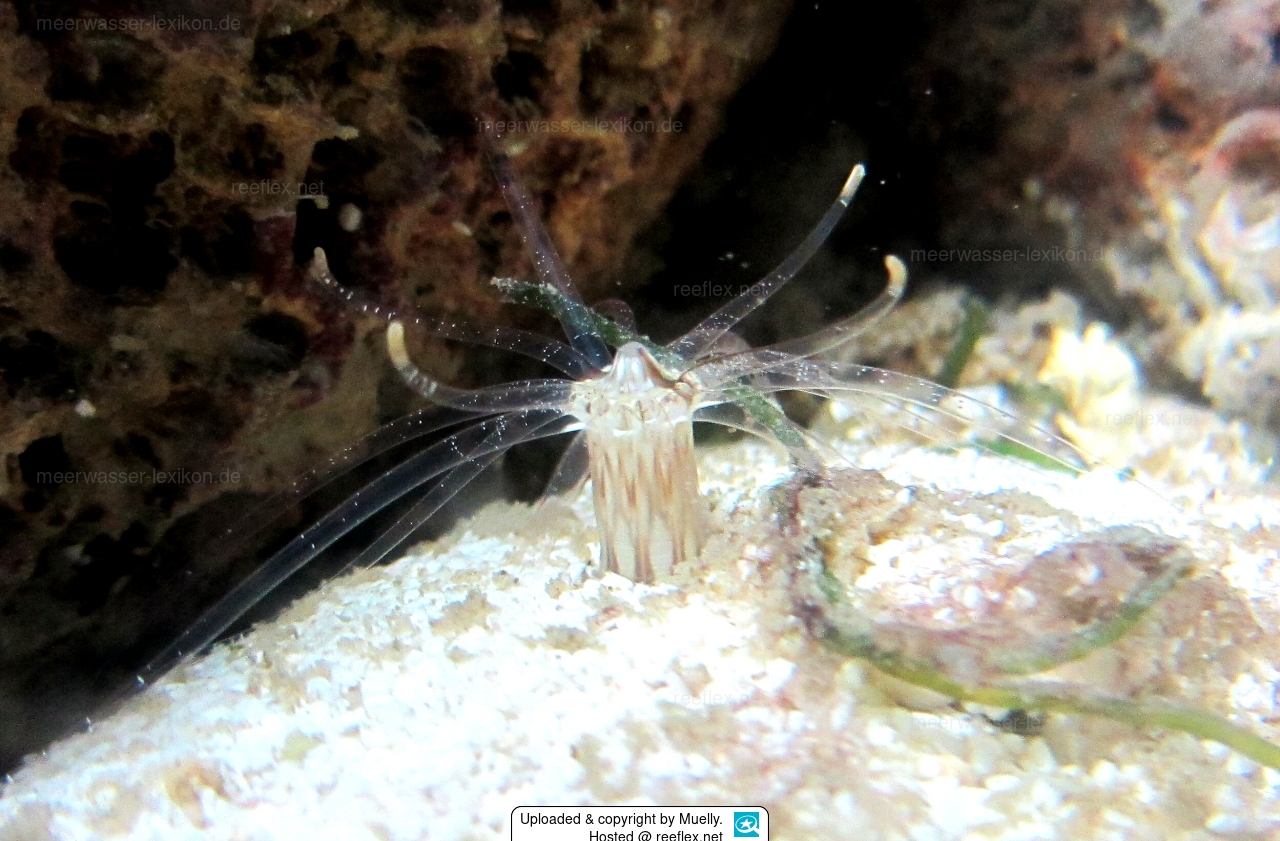Info
Edwardsia sp. or Scolanthus sp.
These anemones belongs to the Family Edwardsiidae, probably genus Edwardsia .
The ID was kindly supported by Nadya Sanamyan(actinaria.com):"...yes, these all are Edwardsiids and most probably either Edwardsia or Scolanthus. It is not possible to identify them to species level on the photos, to do identification it is necessary to examine the anatomy of preserved specimens (and even in this case the identification of Edwardsiids is a difficult task and it will be necessary to examine several specimens and to know from which region were they collected)..."
Edwardsia anemones live in the sand or gravel, wherefore they called burrowing sea anemones or sand anemones.All members of this family are worlwide in distribution. Edwardsia sp.is from Indonesia.
Unfortunately there is no more information available and we would be grateful for any supplementary references.
Very similar ,but also unknown sea anemones shows www.wildsingapore.com as "Transparent spoke anemone". This sea anemone often seen on silty sandy shores inside lagoons.
Biota > Animalia (Kingdom) > Cnidaria (Phylum) > Anthozoa (Class) > Hexacorallia (Subclass) > Actiniaria (Order) > Nynantheae (Suborder) > Athenaria (Infraorder) > Edwardsiidae (Family) > Edwardsia (Genus)
These anemones belongs to the Family Edwardsiidae, probably genus Edwardsia .
The ID was kindly supported by Nadya Sanamyan(actinaria.com):"...yes, these all are Edwardsiids and most probably either Edwardsia or Scolanthus. It is not possible to identify them to species level on the photos, to do identification it is necessary to examine the anatomy of preserved specimens (and even in this case the identification of Edwardsiids is a difficult task and it will be necessary to examine several specimens and to know from which region were they collected)..."
Edwardsia anemones live in the sand or gravel, wherefore they called burrowing sea anemones or sand anemones.All members of this family are worlwide in distribution. Edwardsia sp.is from Indonesia.
Unfortunately there is no more information available and we would be grateful for any supplementary references.
Very similar ,but also unknown sea anemones shows www.wildsingapore.com as "Transparent spoke anemone". This sea anemone often seen on silty sandy shores inside lagoons.
Biota > Animalia (Kingdom) > Cnidaria (Phylum) > Anthozoa (Class) > Hexacorallia (Subclass) > Actiniaria (Order) > Nynantheae (Suborder) > Athenaria (Infraorder) > Edwardsiidae (Family) > Edwardsia (Genus)







 Muelly
Muelly



















